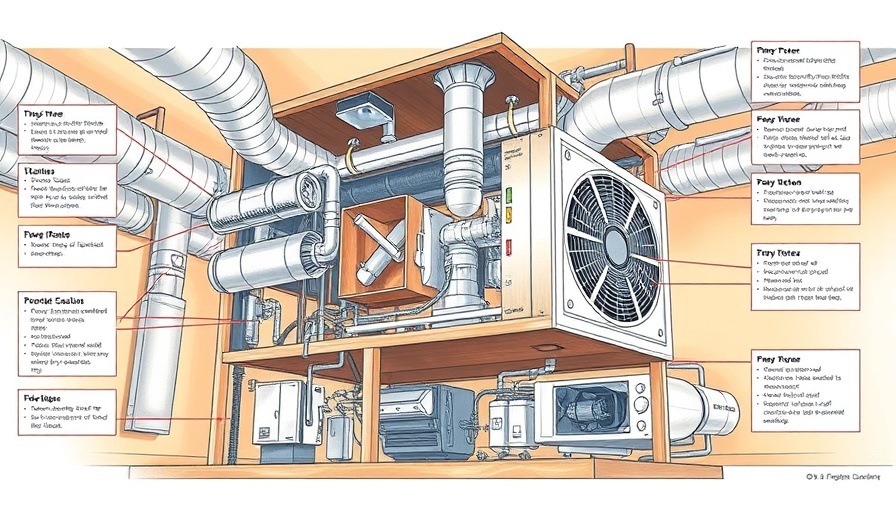
Understanding Make-Up Air: A Vital Component for Energy-Efficient Homes
As energy-efficiency becomes a centerpiece of modern home construction, understanding make-up air is essential. This refers to the air that replaces the air exhausted from a building, balancing the indoor air pressure. Proper management of make-up air is crucial for maintaining optimal airflow and ensuring the safety and health of the home's occupants. Knowing how to implement a cost-effective make-up air system can save homeowners significant energy costs and improve indoor air quality.
Cost-Effective Solutions for Make-Up Air Requirements
Home builders are increasingly looking to integrate simple yet effective solutions for make-up air systems. Achieving this involves incorporating pathways for fresh air to penetrate the building envelope without detrimental energy losses. A few strategic methods include:
- Passive Ventilation: Utilizing openings in walls or windows that allow fresh air to flow naturally with minimal energy expenditure.
- Balanced Air Pressure: Investing in systems that manage airflow, such as heat recovery ventilators (HRVs), which recover heat from outgoing air to warm incoming air.
- Smart Controls: Adopting programmable systems that automatically adjust ventilation based on occupancy and air quality sensors, ensuring optimal air quality without wasting energy.
The Importance of Local Climate Considerations
Every home is unique, especially when evaluating the need for make-up air based on local environmental conditions. Regions with extreme weather conditions may require customized solutions to ensure that incoming air maintains a comfortable temperature, preventing excessive energy usage for heating or cooling. Understanding local climate impacts not only aids in efficient system design but also enhances the overall sustainability of new builds.
Future Trends in Make-Up Air Systems
As the construction industry becomes more attuned to sustainable practices, we can expect innovations in make-up air technologies. Future systems might incorporate real-time monitoring and AI-driven algorithms to optimize energy use while maximizing air quality. Homeowners can stay ahead by considering these advanced systems to ensure that their homes remain efficient and healthy.
 Add Row
Add Row  Add
Add 






Write A Comment